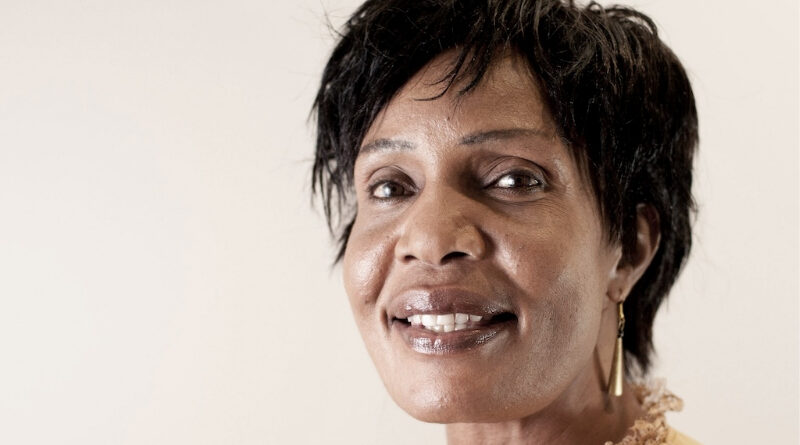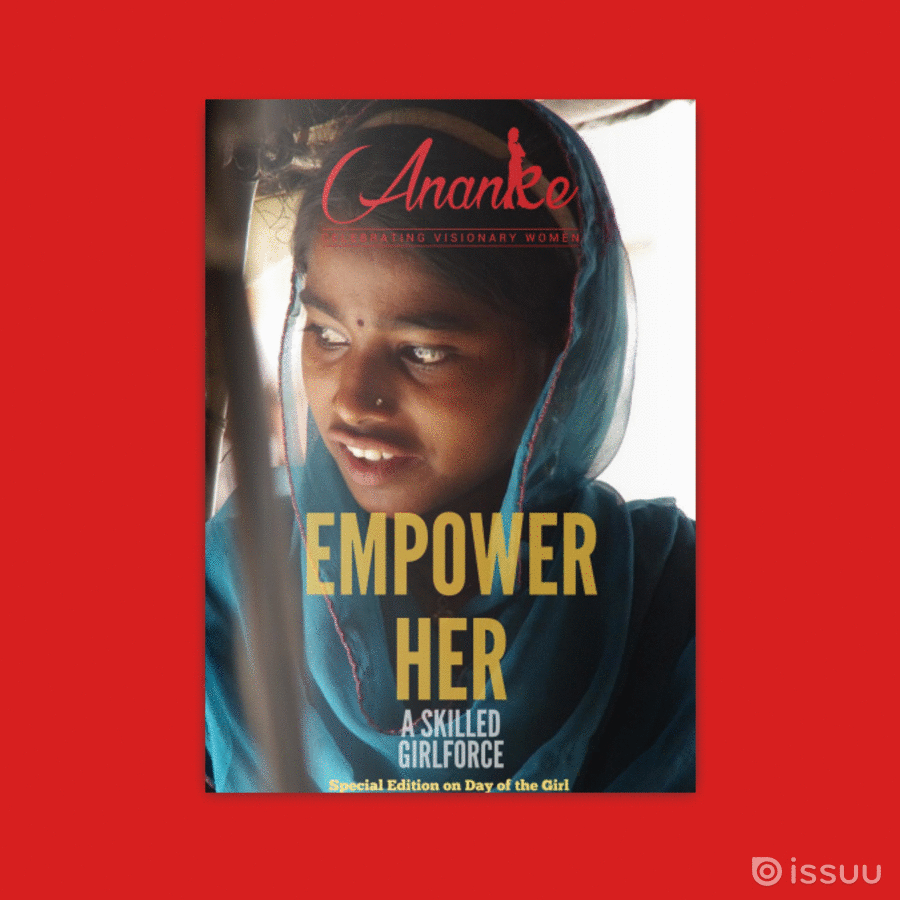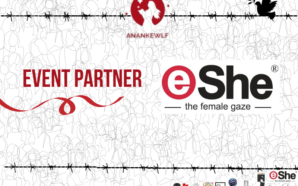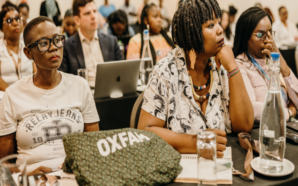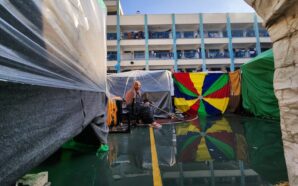This interview is part of Ananke's special #Resilience Edition, click here to view.
Jane Ohuma, Country Manager Kenya and Cluster Lead for Kenya, Burundi and Rwanda, The Fred Hollows Foundation, chats with Sabin Muzaffar about the organization’s groundbreaking work in Africa, how blindness exacerbates gender inequities and approaching COVID19 with an integrated response.
Tell us about yourself and your role at The Fred Hollows Foundation.
I am the country manager for the Fred Hollows Foundation and cluster lead for Kenya, that includes Rwanda and Burundi. I am a public health nurse by profession with diverse experience; having worked in the government in Kenya. I have also worked in the humanitarian and development sector spanning across Kosovo, Eritrea, Sudan, and of course Kenya. This is my tenth year working with the Foundation which is such a privilege. Our vision at the Foundation is to see a world where no one is needlessly blind or vision impaired.
Why do women in Africa have higher rates of blindness and vision impairment?
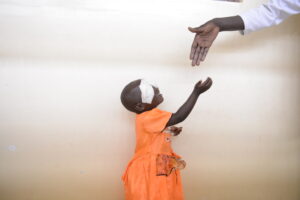 Globally women are more likely to be blind or vision impaired than men. Most women who are vision impaired live in low and middle income countries such as those in Africa. This is specifically so in Africa because about 40 percent of the continent’s population is living below the poverty line. So focusing Africa, women living in poverty are particularly at risk of becoming blind and are less likely to access care for preventable and treatable eye care treatment. When the question arises why more women are turning blind, it really is because they are less likely to seek care, which can be attributed to prevailing cultural norms and gender roles.
Globally women are more likely to be blind or vision impaired than men. Most women who are vision impaired live in low and middle income countries such as those in Africa. This is specifically so in Africa because about 40 percent of the continent’s population is living below the poverty line. So focusing Africa, women living in poverty are particularly at risk of becoming blind and are less likely to access care for preventable and treatable eye care treatment. When the question arises why more women are turning blind, it really is because they are less likely to seek care, which can be attributed to prevailing cultural norms and gender roles.
If you look at cataract or trachoma cases, the two leading causes of avoidable blindness in Africa; women are generally more at risk. It is mainly because of their social status and biological factors such as traditional gender roles that put them in greater contact with children and also the fact that women live longer compared to men. They are also less likely to access care due financial factors as well as lack of awareness. If we talk about Africa as a community, they do not prioritize eye health. The situation has become unbearable and women usually seek care when it is too late. Apart from lack of awareness, distance to healthcare facilities is another. A woman’s role in an African society, where she is solely responsible for care work prevents her to leave her home and travel distances to seek help. So for a woman to actually seek health services, the situation has to really be dire because she sees it as leaving her children, household chores to attend to herself. And so it is just not a priority especially for women.
What are the impacts of gender inequity in vision loss on women and girls in Africa?
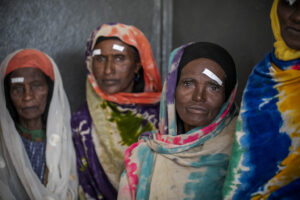
The Fred Hollows Foundation Ambassador Actor, Director and Screenwriter Joel Edgerton in Ethiopia to observe the foundations work. Dr Wondu Alamayehu, technical advisor to The Fred Hollows Foundation on trachoma showing Joel the problem and the work. Hawiti Tufa, 60 ( we visited Hawiti at her home) Daughter is Geno Hussein, Son is Jundi Hussein)
There may be women who have the awareness and do seek services but do not possess financial autonomy. Kenyan society for example is a patriarchal one, where men are financial decision makers. So in some communities, the man has to agree and approve the trave, cost and care services. With loss of vision or impairment, all these factors then play a huge role in exacerbating already existing gender inequities. It further reduces a woman’s participation in paid work and economic decision making, the inability of going to school especially for girls and therefore they are most at risk of all forms of violence.
If a girl, for example, is born blind in a poor family, she would not be prioritized in receiving any kind of education. So we really need to raise awareness of the families. Furthermore, if you have a visually impaired or blind parent or family member, it is most likely that that the girl child will remain behind to lend support and look after, preventing her from going to school. The brother will go to school and this is how gender roles seal her fate; also reducing economic opportunities for her.
In the era of COVID19, how is the pandemic impact the eye health now and need to be done to ensure people with vision impairment are not left behind?
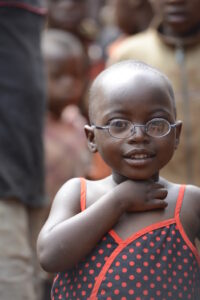 First of all, all resources are now being redirected to respond to the COVID19 crisis. This is of particular concern considering eye health has traditionally been a low priority. For example if you look at Africa, governments have traditionally prioritized healthcare issues relating to malaria and non-communicable diseases etc. Now with the advent of COVID, you will see this de-prioritization has been amplified. So you may still have funds channeled to malaria but eye health has really been impacted. There is also an overall reduction in access to eye healthcare services. This is also because of several factors such as patients fearing to go to the hospital.
First of all, all resources are now being redirected to respond to the COVID19 crisis. This is of particular concern considering eye health has traditionally been a low priority. For example if you look at Africa, governments have traditionally prioritized healthcare issues relating to malaria and non-communicable diseases etc. Now with the advent of COVID, you will see this de-prioritization has been amplified. So you may still have funds channeled to malaria but eye health has really been impacted. There is also an overall reduction in access to eye healthcare services. This is also because of several factors such as patients fearing to go to the hospital.
Some eye health workers have been mobilized to support COVID response. There is also an inadequate supply of PPE kits. Without proper equipment, eye healthcare providers are unable to offer services to patients. The other area is the need to maintain social distancing. So the facilities that do provide eye health services can only allow a certain number of patients.
So what needs to be done? We need to increase donor awareness and education. We need to highlight how the crisis has impacted healthcare and that more funds are needed apart from COVID19 response. Here also the role of media becomes very significant. This will also ensure the safety of the healthcare workers. We also have to design special programs to reach people where they live. We have really embraced technology with the rise of the pandemic, social distancing and lockdowns; so it is important to innovate and design programs where people can be reached at homes and would not have to travel to access care.
You have been a strong advocate for conducting gender analysis in eye health. Why?
The Fred Hollows Foundation has made ‘ensuring equitable access to eye health’ a priority in its strategic plan. It is important to accurately identify gender barriers and tackle them appropriately because without conducting this analysis and merely working on assumptions, we cannot get to the root cause of gender disparity. A good practice is one that is based on good gender analysis that provides a deeper understanding and helps us to document the differences in gender roles, activities, needs and opportunities in context. Gender analysis also gives us evidence to design gender specific and transformative programs as well as data to advocate for inclusive policies that consider both women’s and men’s needs. Furthermore, it gives us evidence for increased action, reaching out to donors, governments and other stakeholders for equitable eye care services.
Tell us about a patient story that has resonated with you the most.
There is a story that touched me as a mother first and then an eye care advocate. This is a story of a mother and a son. She was a single mother raising three children, living in one of the remote villages in Kenya with her blind seven-year-old son. The mother knew that the boy’s life would be hard as she was blind herself. On top of that, she was trapped by poverty and distance. It was a struggle for this lady to provide for her three children and there were no local eye health services or eye care hospital that treated children. Eye hospitals are usually very far especially when we talk about remote villages. So the lady looked for services at nearby healthcare facilities and when she managed to get to one, she couldn’t afford it. This is such a common story for poor communities. Luckily, our eye health workers and ambassadors were able to locate her and referred her to one of The Fred Hollows Foundation supported hospitals where both she and her son received treatment. She didn’t even think about herself as she was overjoyed that her son would receive help. Both of them got treatment and the surgery was a big improvement to their lives. It was really successful and that is why we really focus on training eye health workers so that they can locate and help people in dire need. As a mother myself, I was so happy to see her face light up now that she could see her children and her son could go to school. Such help that the foundation provided brought about a positive and transformative change in this family’s life.
What role can women play in international development?
I will approach this question at a community level because international development cannot ignore the grassroots. First and foremost, the central role of women in society plays a huge part in the stability, progress and long term development of society. More so in Africa, 80 percent of agricultural production comes from small farmer largely comprising of women. So they contribute significantly to the development of nations. Women globally have to be bold and speak out. Women need to aspire. We need to dare to create change.
Images courtesy: The Fred Hollows Foundation




